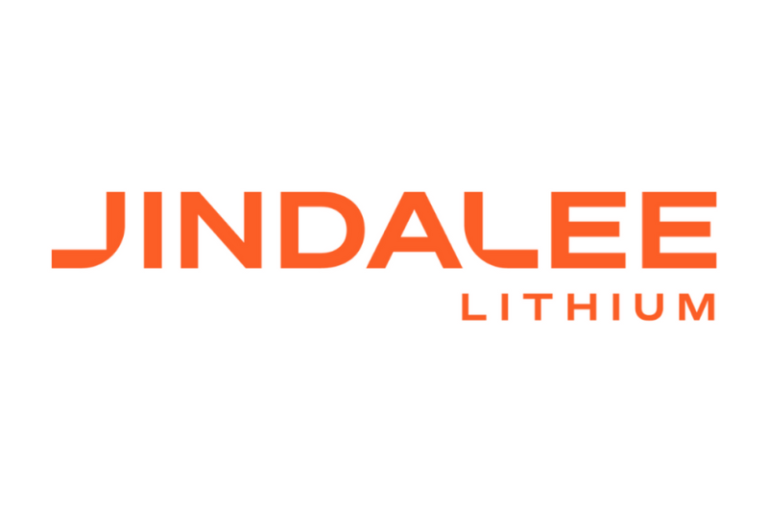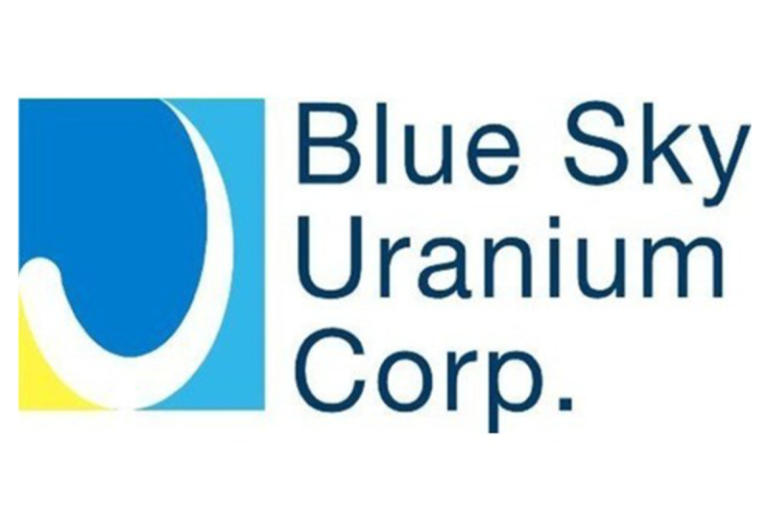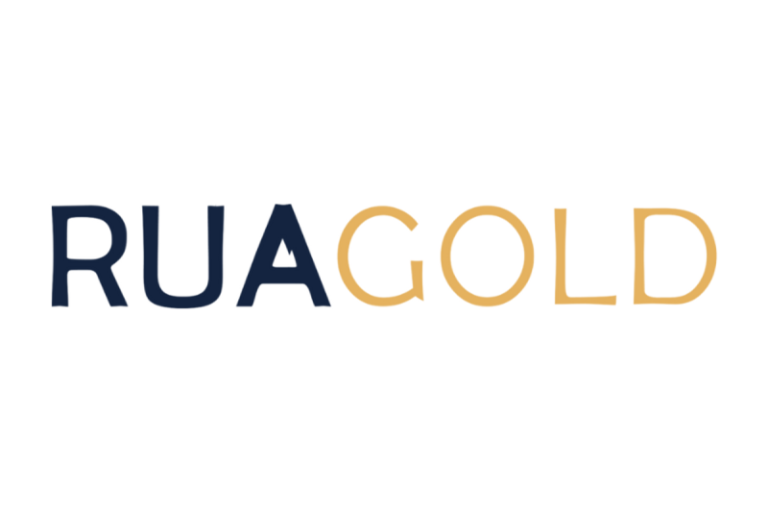Rua Gold Inc. (TSXV: RUA) (OTCQB: NZAUF) (WKN: A40QYC) (‘Rua Gold’ or the ‘Company’) is pleased to provide an update on its gold-antimony exploration at the Auld Creek project in the Reefton Goldfield on the South Island of New Zealand, reporting improved gold grades from current drilling in diamond drillholes ACDDH026, ACDDH027, ACDDH028.
Highlights:
-
Following up on the last high grade results from the Company, the next holes intersected broader zones of gold in hole ACDDH027 and narrow but strong gold-stibnite (antimony sulphide) mineralization in ACDDH028.
-
Assay results show:
-
ACDDH026: 2.1m @ 1.25g/t Au from 175m depth
-
ACDDH027: 9m @ 5.9g/t AuEq1 (5.2g/t Au & 0.16% Sb) from 159m depth
-
ACDDH028: 1.25m @ 48.3g/t AuEq1 (13.3g/t Au & 8.1% Sb) from 210m depth
-
ACDD024,025 confirmed higher grade antimony mineralisation on the Fraternal shoot, the recent drilling ACDDH27,28 indicates an improvement in gold grade with depth.
-
The gold grades on the Fraternal shoot plunge to the south, current drilling is testing 80-100m below the current resource envelope, before pivoting to testing the northerly extensions of the Fraternal ore body.
-
Auld Creek has an inferred resource hosted by two ore shoots, Bonanza and Fraternal. This resource outcrops at surface and is continuous to 160m vertically and open at depth.
-
Surface soil geochemistry strongly endorses extensions to the Fraternal north prospect and Bonanza northeast prospect, confirming the system is traceable over a 2.5km length.
Robert Eckford, CEO of Rua Gold commented: ‘It is encouraging to see an improvement in gold grades with depth on the Fraternal lode, and the continuation of high-grade antimony accompanying the gold in narrow plunging shoots.
Drilling to date on Auld Creek antimony-gold prospect has increased confidence in the existing gold-antimony resource and highlighted higher-grade plunging shoots that remain open to the south. We are focused on expanding the Auld Creek resource both north and south, with intensified surface exploration showing early promise in identifying additional mineralization over its 2.5km length.’
Figure 1: Overview of the Reefton Goldfield.
To view an enhanced version of this graphic, please visit:
https://images.newsfilecorp.com/files/10755/248701_e728e92b44814a54_012full.jpg
Figure 2: Fraternal and Bonanza ore shoots at Auld Creek.
Note that AuEq amounts have been calculated using recent spot prices of gold and antimony and applying a ~30% discount. The gold equivalent formula is based on AuEq = Au g/t + 4.3 x Sb% using a Au price of US$2065/oz, Sb price of US$34,300 per tonne and 85% recovery.
To view an enhanced version of this graphic, please visit:
https://images.newsfilecorp.com/files/10755/248701_e728e92b44814a54_013full.jpg
GLOBAL SUPPLY AND VALUE OF ANTIMONY
Antimony is a critical metalloid primarily sourced from the mineral, stibnite. It is highly valuable and increasing in demand due to its versatility and has essential applications across renewable energy, liquid battery metals, defence and technological sectors.
Due to its limited supply, predominantly controlled by China, Russia & Tajikistan, antimony is considered a strategic material essential for supply chain security, particularly during periods of geopolitical instability. This was heightened in August 2024, when China announced export controls on processed antimony products. In response to these controls, nations have accelerated their efforts to secure alternative sources of antimony to mitigate the risk of significant supply chain vulnerabilities.
The US, EU, UK, Japan, Canada and Australia all designate antimony as a critical mineral. On January 31, 2025, New Zealand also announced their Critical Mineral List which included antimony.
Reflecting heightened demand, the price of antimony has reached new highs, currently trading over US$50,000 per tonne, a significant increase from US$11,350 per tonne at the start of 2024. This market shift has intensified interest in the strategic antimony potential held by Rua Gold.
EXPLORATION POTENTIAL
Rua Gold commenced drilling at Auld Creek in December 2024. It has a targeted program to drill four mineralised shoots identified from historical surface exploration work interpreted by the Rua Gold team over the past 3 months.
Auld Creek is situated between two past producing mines, Globe Progress mine, and the Crushington Group of mines which collectively produced 933,000oz at 14.0g/t Au (Barry 1993). Auld Creek has three historic adits but no commercial production from the reefs.
Rua Gold has an inferred resource at Auld Creek indicating 700,000 tonnes at 3.1g/t Au and 1.1% Sb for 67,000oz of gold and 8,000 tonnes of antimony2 (AuEq 110,000oz3). The resource is restricted to two of the four known shoots. Soil geochemistry indicates the potential for discovery of additional mineralised shoots over a strike length of 2.5km.
Four of the eight holes completed to date intersected 4-5m of strong visible stibnite (antimony sulfide) mineralization in the Fraternal-Bonanza structure.
Results from ACDDH024, ACDDH025 confirm the approximate average gold grades, but report higher antimony grades than the current resource estimate. Results from ACDDH027, ACDDH028 highlight above average gold grades with narrow but high-grade antimony in ACDDH028.
Ongoing drilling is targeting the southern plunging Fraternal gold-antimony shoot which remains open along strike and at depth.
Intensified surface exploration is showing very encouraging strong trends both north and north-west confirming additional targets on the Fraternal North and Bonanza north-west extensions.
Figure 3: Arsenic soil geochemistry over Auld Creek area.
To view an enhanced version of this graphic, please visit:
https://images.newsfilecorp.com/files/10755/248701_e728e92b44814a54_019full.jpg
ABOUT Rua Gold
Rua Gold is an exploration company, strategically focused on New Zealand. With decades of expertise, our team has successfully taken major discoveries into producing world-class mines across multiple continents. The team is now focused on maximizing the asset potential of Rua Gold’s two highly prospective high-grade gold projects.
The Company controls the Reefton Gold District as the dominant landholder in the Reefton Goldfield on New Zealand’s South Island with over 120,000 hectares of tenements, in a district that historically produced over 2Moz of gold grading between 9 and 50g/t.
The Company’s Glamorgan Project solidifies Rua Gold’s position as a leading high-grade gold explorer on New Zealand’s North Island. This highly prospective project is located within the North Islands’ Hauraki district, a region that has produced an impressive 15Moz of gold and 60Moz of silver. Glamorgan is adjacent to OceanaGold Corporation’s biggest gold mining project, Wharekirauponga.
For further information, please refer to the Company’s disclosure record on SEDAR+ at www.sedarplus.ca.
TECHNICAL INFORMATION
Simon Henderson CP, AUSIMM, a qualified person under National Instrument 43-101 Standards of Disclosure for Mineral Projects and Chief Operating Officer and a director of Rua Gold, has reviewed and approved the technical disclosure contained herein. Mr. Henderson has participated in the geochemical sampling, and mapping programs to verify that they have been conducted in accordance with standard operating procedures. Mr. Henderson has verified the data disclosed by running checks on the location, analytical, and test data underlying the information in the technical disclosure herein.
QA/QC Drill Core
Rock samples were sent to SGS Laboratories, Westport for sample preparation. Samples were crushed and pulverized to 85% passing 75 µm. The pulverized rock-chips were split into two samples: a ~50 g sent for laboratory analysis, and the reject returned to RGL for pXRF analysis and storage. Pulverized rock-chip samples were analyzed for gold (Au) by 50-g fire assay with AAS finish at SGS Waihi (SGS Code FAA505); and for antimony (Sb) by Sodium Peroxide Fusion Analysis by ICP-MS at SGS Waihi.
QA/QC Soil Samples
Pre-planned soil sampling points on a 20 m x 100 m grid were loaded onto a handheld GPS for guidance. A spade was used to acquire a ~1.0 kg sample from the C horizon, which was put in a wet-strength paper sample bag with wire ties. Sample information was logged in a notebook in the field, including sample ID, depth, color, horizon, slope, sample description, sampler, basement, and comments. Each sample was photographed in the field alongside the GPS with coordinates visible and each sample site marked in the field with biodegradable flagging tape. Samples were taken back to Rua Gold’s Reefton facility for preparation. The sample information was entered on.csv files and uploaded to an SQL database.
Samples were dried in a customized incubator, set at 38°C, for a minimum of two days. Once the samples were fully dried, they were sieved to Rua Gold’s Reefton facility using a Olympus Vanta pXRF analyzer; and then on to ALS Brisbane, Australia, for low-level gold analysis using Au-TL43; trace level Au by aqua regia extraction with ICP-MS finish. Detection limit 1 ppb Au.
Field duplicates were collected every 20th sample and underwent the same sample collection and preparation process outlined above. Duplicates were checked and validated by Rua Gold’s Isogonal data validation system to ensure compliance.
Rua Gold Contact
Robert Eckford
Chief Executive Officer
Email: reckford@RUAGOLD.com
Website: www.RUAGOLD.com
This news release includes certain statements that may be deemed ‘forward-looking statements’. All statements in this new release, other than statements of historical facts, that address events or developments that the Company expects to occur, are forward-looking statements. Forward-Looking statements are statements that are not historical facts and are generally, but not always, identified by the words ‘expects’, ‘plans’, ‘anticipates’, ‘believes’, ‘intends’, ‘estimates’, ‘projects’, ‘potential’ and similar expressions, or that events or conditions ‘will’, ‘would’, ‘may’, ‘could’ or ‘should’ occur and specifically include statements regarding: the Company’s strategies, expectations, planned operations or future actions, including but not limited to exploration programs at its Reefton and Glamorgan projects and the results thereof. Although the Company believes the expectations expressed in such forward-looking statements are based on reasonable assumptions, such statements are not guarantees of future performance and actual results may differ materially from those in the forward-looking statements.
Investors are cautioned that any such forward-looking statements are not guarantees of future performance and actual results or developments may differ materially from those projected in the forward-looking statements. A variety of inherent risks, uncertainties and factors, many of which are beyond the Company’s control, affect the operations, performance and results of the Company and its business, and could cause actual events or results to differ materially from estimated or anticipated events or results expressed or implied by forward-looking statements. Some of these risks, uncertainties and factors include: general business, economic, competitive, political and social uncertainties; risks related to the effects of the Russia-Ukraine war; risks related to climate change; operational risks in exploration, delays or changes in plans with respect to exploration projects or capital expenditures; the actual results of current exploration activities; conclusions of economic evaluations; changes in project parameters as plans continue to be refined; changes in labour costs and other costs and expenses or equipment or processes to operate as anticipated, accidents, labour disputes and other risks of the mining industry, including but not limited to environmental hazards, flooding or unfavorable operating conditions and losses, insurrection or war, delays in obtaining governmental approvals or financing, and commodity prices. This list is not exhaustive of the factors that may affect any of the Company’s forward-looking statements and reference should also be made to the Company’s short form base shelf prospectus dated July 11, 2024, and the documents incorporated by reference therein, filed under its SEDAR+ profile at www.sedarplus.ca for a description of additional risk factors.
Forward-Looking statements are based on the beliefs, estimates and opinions of the Company’s management on the date the statements are made. Except as required by applicable securities laws, the Company undertakes no obligation to update these forward-looking statements in the event that management’s beliefs, estimates or opinions, or other factors, should change.
Table 1: Location of Auld Creek drill holes from RUA 2024-2025 program
| Hole ID |
Easting |
Northing |
rL |
Total
Depth |
Site _ID |
Dip |
Azimuth
(true) |
Year |
| ACDDH022 |
1507212 |
5333199 |
508 |
108.5 |
Pad 10 |
-54 |
193 |
2024 |
| ACDDH023 |
1507212 |
5333199 |
508 |
51.5 |
Pad 10 |
-60 |
85 |
2024 |
| ACDDH024 |
1507290 |
5333146 |
539 |
150 |
Old 13 |
-37 |
220 |
2025 |
| ACDDH025 |
1507290 |
5333146 |
539 |
180.9 |
Old 13 |
-54 |
248 |
2025 |
| ACDDH026 |
1507290 |
5333146 |
539 |
200 |
Old 13 |
-59 |
231 |
2025 |
| ACDDH027 |
1507290 |
5333146 |
539 |
193.4 |
Old 13 |
-45 |
212 |
2025 |
| ACDDH028 |
1507079 |
5332952 |
607 |
243.5 |
Pad 18 |
-50 |
104 |
2025 |
| ACDDH029 |
1507079 |
5332952 |
607 |
256 |
Pad 18 |
-50 |
120 |
2025 |
| ACDDH030 |
1507079 |
5332952 |
607 |
268.5 |
Pad 18 |
-53 |
85 |
2025 |
Table 2: Significant drilling intercepts at Auld Creek, full mineralized zone composites (1.5g/t Au cut-off)
| Sample No |
From |
To |
Interval |
Au (g/t) |
Sb (%) |
| ACDDH026 |
175 |
175.9 |
0.9 |
0.96 |
|
| ACDDH026 |
175.9 |
177.1 |
1.2 |
1.55 |
|
| ACDDH027 |
152 |
153 |
1 |
2.52 |
|
| ACDDH027 |
153 |
154 |
1 |
1.88 |
|
| ACDDH027 |
154 |
155 |
1 |
3.44 |
|
| ACDDH027 |
155 |
156 |
1 |
2.25 |
|
| ACDDH027 |
156 |
157 |
1 |
1.84 |
|
| ACDDH027 |
157 |
158 |
1 |
0.37 |
|
| ACDDH027 |
158 |
159 |
1 |
0.15 |
|
| ACDDH027 |
159 |
160 |
1 |
2.38 |
0.013% |
| ACDDH027 |
160 |
161 |
1 |
2.39 |
0.802% |
| ACDDH027 |
161 |
162 |
1 |
4.75 |
0.008% |
| ACDDH027 |
162 |
163 |
1 |
2.84 |
0.016% |
| ACDDH027 |
163 |
164 |
1 |
8.42 |
0.010% |
| ACDDH027 |
164 |
165 |
1 |
4.7 |
0.010% |
| ACDDH027 |
165 |
166 |
1 |
3.77 |
0.009% |
| ACDDH027 |
166 |
167 |
1 |
15 |
0.178% |
| ACDDH027 |
167 |
168 |
1 |
3.11 |
0.428% |
| ACDDH028 |
209.5 |
210.15 |
0.65 |
0.92 |
|
| ACDDH028 |
210.15 |
210.6 |
0.45 |
18.4 |
11.600% |
| ACDDH028 |
210.6 |
211.4 |
0.8 |
8.28 |
4.680% |
| ACDDH028 |
211.4 |
212 |
0.6 |
1.68 |
|
1.Using recent spot prices of gold and antimony, and applying a ~30% discount, the gold equivalent formula is based on AuEq = Au g/t + 4.3 x Sb% using a Au price of US$2065/oz, Sb price of US$34,300 per tonne and 85% recovery.
2.Please see the Company’s technical report entitled, ‘Technical Report on Reefton Project, New Zealand’, dated October 30, 2024.
3.Based on gold equivalent formula of AuEq = Au g/t + 1.9 x Sb% using a Au price of US$2025/oz, Sb price of US$15,000 per tonne and 85% recovery.
To view the source version of this press release, please visit https://www.newsfilecorp.com/release/248701










